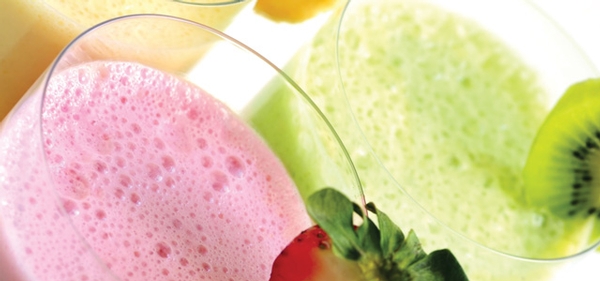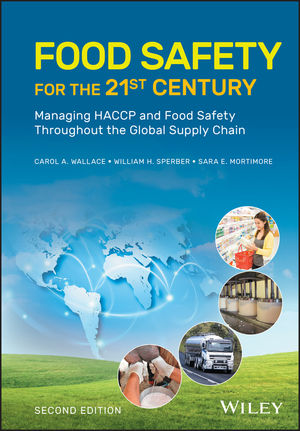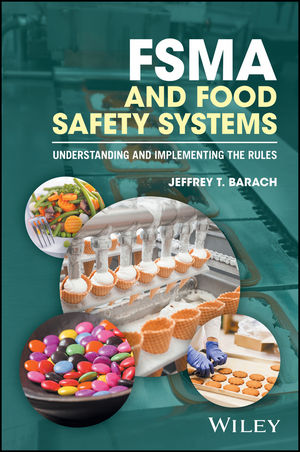The Need for Ingredients That Improve the Health and Safety of Shelf-Stable Drinks

The market for healthy and functional foods and beverages represents a tremendous growth opportunity for food processors. Research demonstrates that shoppers are increasingly concerned with the effect that the products they consume will have on their health: “Nine out of ten Americans have given at least a little thought to the ingredients in their foods or beverages.”[1] However, they are unwilling to sacrifice enjoyment when making food and beverage purchases, as “taste and price drive food and beverage choices more often than healthfulness.”[2]
Food processors are challenged to meet the growing demand for healthy, tasty, functional beverages that consumers seek, while at the same time maintaining high levels of product quality and safety.
Looking ahead, predictions assert that “by 2050 the world’s population will reach 9.1 billion, 34 percent higher than today.”[3] A global supply chain of healthy, safe foods will be more important than ever to ensure a reliable world food supply. Products must be able to travel great distances and arrive intact, flavorful and nutritious.
Natural food additives play a vital role in the creation of beverages that deliver safe nutrition, and maintain their nutrition and flavor profiles over considerable time and distance. They must be safe, efficient and effective. One particular food additive that is uniquely suited to help beverage processors achieve their product goals is carrageenan.
What Is Carrageenan?
Carrageenan is a soluble fiber derived from red seaweed and a food ingredient that has been used for hundreds of years across the globe. It was commonly used in the kitchens of Irish coastal communities, who harvested Chondrus crispus, known as carraigín moss, from the rocky waters along Carrigan Head, giving it its unique name.
It is a high-molecular-weight polysaccharide consisting of galactose sulfate and anhydrogalactose sulfate units. There are several types of carrageenan, from many different species of red seaweed, which provide a large variety of properties in terms of stability and texture. Carrageenan is extracted by boiling the seaweed in water and alkaline broth. The seaweed is then washed, rinsed and filtered to separate the carrageenan from the solids. The remaining carrageenan is chopped and dried before being milled into its final powdered form.
While home cooks have been using carrageenan as a thickener for hundreds of years, its commercial use in the U.S. can trace its roots back to World War II, when it was used to thicken and preserve condensed milk shipped to troops serving abroad. Perhaps it was the local availability of carrageenan that made it the ingredient of choice.
Today, it is a valuable commercial ingredient because of its advantageous properties. When used as an ingredient in beverages, carrageenan preserves texture, structure and stability, enabling the export of countless shelf-stable beverage products. It is particularly suitable for shelf-stable dairy beverages and protein-enriched drinks. Specifically, carrageenan has continued to be used in dairy-based and enriched beverages, mainly in chocolate milk and chocolate milk applications such as syrups and powdered mix.
Why Is Carrageenan Used in Beverages?
With the increasingly global nature of food production, reliable and safe food ingredients are more important than ever to ensure a trusted, far-reaching food supply. When added to beverages, it provides stability that would otherwise be compromised as a result of thermal processing. Its benefits include the following:
• Contribution of body/mouth feel
• Suspension of insoluble material over extended storage
• Stabilization of fat/emulsions
• Prevention of serum (clear) separation
• Reduced agglomeration of denatured protein
From a Processing Perspective
Carrageenan imparts both suspension and textural benefits in beverages through two mechanisms. The first is water gelling. The beverage formula is heated for pasteurization and to solubilize the carrageenan. When cool, the carrageenan interacts with itself to form a weak gel matrix that entraps insoluble particles. This mechanism is useful in ready-to-eat water dessert gel applications. The second mechanism is protein gelling, which provides viscosity, mouth feel and body, as a result of carrageenan interacting with protein.
In some applications, carrageenan serves both functions, as in chocolate milk, where carrageenan first interacts with protein during mixing and pasteurization. It then interacts with itself after the liquid cools and enables particle suspension.
Carrageenan’s multi-functionality—thickening, stability, viscosity—means food processors can simplify ingredient decks, using one ingredient to achieve desired results rather than several products in conjunction. Different types of carrageenan provide different type of textures, in addition to blend, viscosity and gel potential, targeting specific applications. Carrageenan also works well in formulation with other thickeners.
This product can be used to introduce a high-efficiency viscosifier for beverages, functioning better than simple dry blends of gums and providing improved hydration rate, no off flavors, stability and gum synergy, which are leveraged for significant reduction in total hydrocolloid use level.
In application, a carrageenan-based viscosifier demonstrates lower viscosity at higher temperature than guar and broader use range than guar, xanthan and other gum combinations. It can be used to develop more mouth feel and body than equivalent amounts of guar, while providing more suspension. It has outperformed alternatives in areas of viscosity, thixo-tropy, permissibility in organics, off flavors, rapid hydration or dispersion, gelation issues, suspension and stability over time. Overall, its use advantages offer significant potential for more efficient processing, resulting in use reduction and cost savings for processors. It is particularly effective in dry-mix beverages (both fruit and chocolate flavored), soy milk, and sports and energy drinks.
For food formulators and processors, carrageenan is also desirable because it enables beverages to achieve desired textures without negative effects—namely, interference or effect on flavor. Alternative thickeners, like starch, can get pasty and mask flavors when used, especially in higher quantities. Rather than mask flavor, carrageenan enhances flavor release, even at low use levels, which provides the additional benefit that in processing, it won’t damage or impair equipment like starch or guar might because low viscosity is maintained.
Carrageenan can be used in beverage applications to contribute to extended shelf life without loss of quality, paving the way for reductions in food waste—annually, more than 1.3 billion tons of food are wasted globally. Many of these applications also eliminate the need for refrigeration, resulting in reduced electricity and fossil fuel consumption during product transportation and while on store shelves.
From a Health and Consumer Perspective
Carrageenan also offers advantages in meeting consumer preference—creating creamy, indulgent drinks—but more importantly, it helps improve the health and safety of the beverages in which it’s an ingredient.
Carrageenan is frequently used in dry-mix beverages because of the viscosity it’s able to confer when water is added. The market has seen a rise in dry-mix consumption, particularly with health-and-nutrition-type drinks, like fortified specialty drinks. Powdered forms allow consumers greater control over their beverages, granting them the ability to mix individual drinks to their preferred potency and size, so that users are consuming as much, or as little, as they want. They don’t have to open an entire drink if they want only a single serving. Powdered mixes are also more efficient to transport and cost less to store.
Carrageenan’s unique properties allow it to serve as a fat and sugar substitute, enabling the formulation of beverages with lower levels of fats and sugars, healthier alternatives for consumers.
Its gelling and stabilization properties also help solve nutrition challenges in areas of the world where access to clean water is unreliable. The best example of this is the use of carrageenan in liquid infant formula to ensure that the ingredients do not separate, potentially leading to unequal nutrition delivery. This function is critical to ensuring that vital nutrients remain stable and available to infants who may consume infant formula as their sole source of nutrition and is useful in increasing the health and safety of infants and young children in areas of the world that lack reliable access to clean drinking water.
Similarly, when carrageenan is included in beverages, it contributes to the efficient use of protein. It enables the use of vegetable and animal protein to make products that taste good and are affordable in a world with an increasing demand for protein.
Carrageenan is also approved for use in processed organic beverage applications, a segment of the market that continues to demonstrate sustained growth. Carrageenan’s minimal processing and sustainable raw materials make it an ideal ingredient for organic foods. It enables organic food producers to leverage technology and increase availability of their products, making organic foods more available to people of all income levels.
Misleading Research Questions Carrageenan’s Safety
In recent years, the safety of carrageenan as a food additive has come under some scrutiny. Misleading in vitro research primarily out of one lab has attempted to demonstrate a link between carrageenan and intestinal inflammation. However, the small body of research that asserts a connection between ingestion of carrageenan and gastrointestinal inflammation has been discredited for its flawed methodology and irrelevant comparisons. Moreover, carrageenan binds to protein in food so firmly that it cannot separate to cause the kinds of conditions that are reported anecdotally.
Sound Science Demonstrates Carrageenan’s Safety
More important than the limited research questioning carrageenan is the rich historical evidence demonstrating the safety of carrageenan. This rigorous science dates back more than 40 years. Studies conducted as recently as 2013,[4, 5] in which animals were fed carrageenan at levels equivalent to human consumption, have shown no gastrointestinal inflammation or other negative health effects.
Overwhelming data from dietary studies have shown that carrageenan is a safe ingredient. Highlighted below are several particularly important studies that demonstrate the safety of the consumption of carrageenan:
• Carrageenan in formula and infant baboon development.[6] In this study, male and female baboons were fed infant formula containing up to 1,220 mg/liter of formula from birth to 112 days. No adverse effects were observed.
• A ninety-day dietary study on kappa carrageenan with emphasis on the gastrointestinal tract.[7] Other than soft stools, this study found no clinical signs in rats fed high doses of food-grade carrageenan with a low molecular-weight tail range of 1.9 percent and 12 percent less than 50 kDa (mean 7 percent). The authors reported that the gastrointestinal tract appeared normal even in the rats given high doses of carrageenan in their diet.
• A critical review of the toxicological effects of carrageenan and processed eucheuma seaweed on the gastrointestinal tract.[8] This paper is a comprehensive review and discussion of carcinogenicity testing of carrageenan in animals.
In summary, based on appropriate toxicological studies, the weight of the evidence demonstrates that carrageenan type does not influence toxicological effects. It has no adverse impact on absorption or utilization of nutrients and has not been shown to cause adverse effects on the immune system.
Thorough discussion of existing studies evaluating the safety of carrageenan as an ingredient in foods can be found in recently published review papers by research scientists Myra Weiner and Jim McKim, available at www.fmccarrageenan.com.
Regulatory Approvals
All the science relevant to the way we consume carrageenan has been reviewed by multiple bodies of scientific experts across the globe, and they continue to conclude that carrageenan is safe for use in foods. In fact, carrageenan remains approved as an ingredient in organic foods after undergoing recent regulatory reviews of its use and the science behind it.
In addition, experts from the World Health Organization (WHO) have placed carrageenan in the best possible category for any food additive, which includes those additives that “[do] not in the opinion of the committee represent a hazard to health.”[9]
Most recently, the Joint Food and Agriculture Organization/WHO Expert Committee on Food Additives reviewed and affirmed the safety of carrageenan for use as a food additive in infant formula or formula for special medical purposes at concentrations up to 1,000 mg/liter. This conclusion was based on a review of breakthrough research and published toxicology studies. Carrageenan has long been used in infant formula, and this latest review reaffirms its safety as a food ingredient in infant formula.
Conclusion
Increasing consumer scrutiny and expanding food safety regulations are bringing greater attention to the ingredients essential to beverage processing. At the same time, the growing world population and increasing demand for improved variety and nutrition profile in consumer beverages makes such ingredients more necessary than ever. Carrageenan is a naturally derived food ingredient that has been used in home kitchens for hundreds of years and in commercial beverage applications for more than 60 years. It has proven to be efficient, effective and safe. In the case of carrageenan, promulgation of misleading science by misinformed consumer groups in recent years has called into question the safety of a centuries-old ingredient. Overwhelming evidence demonstrates that carrageenan is safe for use in food. This fact, coupled with its functionality range and versatility, processing advantages and effectiveness, makes it a valuable ingredient in beverage applications.
William Matakas is the FMC Health and Nutrition seaweeds business marketing manager.
Eunice M. Cuirle is the FMC Health and Nutrition manager of global regulatory affairs.
References
1. www.foodinsight.org/Content/3840/2012%20IFIC%20Food%20and%20Health%20Survey%20Report%20of%20Findings%20(for%20website).pdf.
2. www.icn-net.com/docs/12086_FMIN_Trends2012_v5.pdf.
3. www.fao.org/fileadmin/templates/wsfs/docs/expert_paper/How_to_Feed_the_World_in_2050.pdf.
4. McKim, J.M. 2014. Crit Rev Toxicol March:211–243.
5. Weiner, M.L. 2014. Crit Rev Toxicol March:244–269.
6. McGill, H.C. Jr., C.A. McMahan, H.S. Wigodsky and H. Sprinz. 1977. Gastroenterol 73:512–517.
7. Weiner, M.L., D. Nuber, W.R. Blakemore, J.F. Harriman and S.M. Cohen. 2007. Food Chem Toxicol 45(1):98–106.
8. Cohen, S.M. and N. Ito. 2002. Crit Rev Toxicol 32(5):413–444.
9. www.who.int/foodsafety/chem/jecfa/summaries/Summary74.pdf.
Looking for a reprint of this article?
From high-res PDFs to custom plaques, order your copy today!








